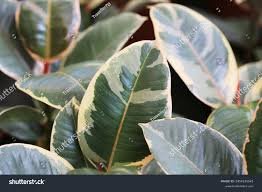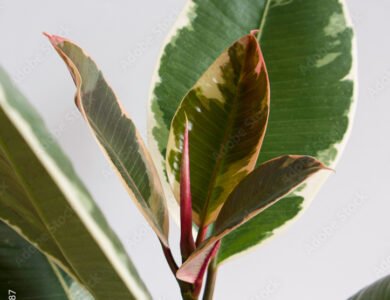Ficus Elastica Tineke Care
Ficus elastica ‘Tineke,’ commonly known as the variegated rubber plant, is a stunning indoor plant known for its eye-catching cream, green, and pink foliage. This low-maintenance beauty can elevate any space, but like all plants, it requires the right conditions to thrive. Whether you’re a beginner or an experienced plant parent, understanding the specific needs of Ficus Elastica Tineke is key to its success.
1. Light: Bright, Indirect Sunlight
Ficus Elastica Tineke thrives in bright, indirect light, which helps maintain its vibrant variegation. Place it near an east-facing window where it can get gentle morning light. Avoid prolonged exposure to harsh direct sunlight, which may scorch its leaves. If the light is insufficient, the variegated patterns may fade, leaving the plant with mostly green foliage.
2. Watering: Balance is Key
The watering routine for Ficus Elastica Tineke is critical. Allow the top 1-2 inches of soil to dry out between waterings. Overwatering can lead to root rot, while underwatering may cause leaf curling or yellowing. During warmer months, you may need to water more frequently, while in winter, reduce the frequency as the plant’s growth slows.


3. Humidity and Temperature: Keep it Comfortable
Ficus Elastica Tineke enjoys moderate to high humidity. While it can tolerate average indoor conditions, misting the plant or using a humidifier can help it thrive, especially during dry seasons. Maintain a temperature range of 60-75°F (16-24°C) and avoid sudden drafts, heaters, or air conditioning vents, which can stress the plant.
4. Soil and Potting: Well-Draining Medium
Use a well-draining potting mix to prevent water from sitting around the roots. A mix containing peat, perlite, and compost works well. Ensure the pot has adequate drainage holes to keep the roots healthy. Repot every 2-3 years or when the plant outgrows its container.
5. Fertilization: Feed Regularly
Feed Ficus Elastica Tineke with a balanced, liquid fertilizer during the growing season (spring and summer) every 4-6 weeks. This encourages healthy growth and vibrant leaf patterns. Skip fertilization in the dormant fall and winter months.
6. Pruning and Maintenance: Keep It Tidy
Regular pruning helps maintain the shape of Ficus Elastica Tineke and removes any yellow or damaged leaves. Pruning also encourages new growth and keeps the plant looking its best.
7. Common Issues and Solutions
- Leaf Drop: Often caused by sudden changes in environment, such as relocating the plant or drafts.
- Browning Edges: Usually a sign of underwatering or low humidity.
- Pests: Watch for spider mites, scale, or mealybugs. Treat infestations with insecticidal soap or neem oil.
Conclusion
Ficus elastica Tineke is a rewarding plant that can thrive indoors with the right care. Focus on providing bright, indirect light, proper watering, and a stable environment, and you’ll enjoy its stunning variegated leaves for years to come. This resilient yet elegant plant is a perfect choice for anyone looking to add a touch of natural beauty to their space.

